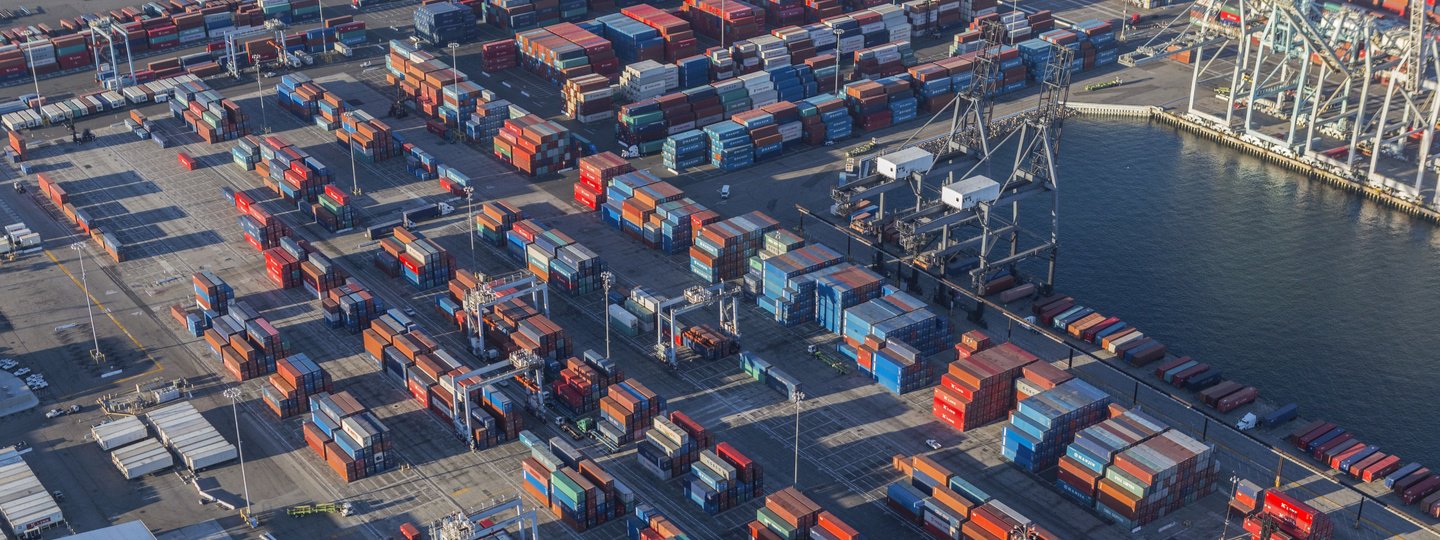Six Seaports Driving Demand For U.S. Industrial Markets
Industrial markets have been booming since the growth of e-commerce, and U.S. seaports support some of the industry’s top demand drivers. They facilitate massive import and export volumes, support millions of jobs and both directly and indirectly form an essential part of the backbone of the industrial real estate sector.
As ship sizes grow and consumers fuel heightened demand for imports, U.S. seaports are undergoing improvements to keep pace with evolving markets, according to Colliers International’s Industrial U.S. Seaport Outlook. From Los Angeles to New York City, the largest seaports in the country are adapting to meet growing demands so they can continue to serve the markets that depend on them.
Port of Los Angeles
The Port of Los Angeles is the largest container port in the U.S. and accounts for 41% of all cargo entering the country. Over $2.6B of capital improvements are planned for the next 10 years to modernize the port’s warehouses, terminals and rail infrastructure, all of which will help the more than 1.6 billion square feet of industrial properties that rely on the port.
Demand is so robust in the area that Los Angeles County reported industrial vacancy rates of 1.3% last year, the lowest in the country. Colliers Executive Managing Director Hans Mumper said the Port of Los Angeles is one of the top economic drivers for all of California and has helped facilitate nearby industrial rent growth, investor demand and new development.
Port of Long Beach
Not far from Los Angeles, the Port of Long Beach is the second biggest container port in the U.S. and boasts the country’s deepest natural harbor. Over the next decade the port plans to spend $4.5B to increase its infrastructure and boost clean energy programs.
While the Port of Long Beach serves many of the same industrial markets as the Port of Los Angeles, it also stocks warehouses throughout much of the Southwest. The Greater Phoenix Area is one of those markets, and Colliers highlighted it as one of the 10 emerging industrial markets to watch this year, largely due to its proximity to the Port of Long Beach and the Port of Los Angeles.
Port of New York & New Jersey
This port serves 61 million people within a 250-mile radius, making it the most densely populated port location in North America. While it’s the busiest port on the East Coast, it needs to make improvements before it will be able to fully accommodate the larger ships now crossing the newly expanded Panama Canal.
Colliers Executive Managing Director Michael Markey said e-commerce companies striving for same-day delivery to the New York City area have pushed industrial vacancy rates to historic lows despite more than 4 million square feet of new construction in the past year. That same demand also pushed current average asking industrial rents 36.4% above the Q3 2011 low point.
Northwest Seaport Alliance
The Northwest Seaport Alliance was created in 2015 and combined the previously competing ports of Tacoma and Seattle. It’s the gateway for the Puget Sound and also handles 80% of all Alaskan trade. The port is currently implementing a 10-year plan to increase cargo volumes by upgrading facilities to handle larger ships.
Colliers Senior Vice President Scott Alan said the growth of e-commerce in the region has helped push the Puget Sound industrial vacancy rate under 3%, which Colliers expects to keep falling. As developers run out of land in the core market, industrial rents in the region are expected to grow between 10% and 15% each year for at least the next two years.
Port of Houston
One of the only major ports in the country where exports represent the majority of cargo, the Port of Houston is dominated by energy-related commodities. The port plans to significantly improve its infrastructure in the coming years to accommodate the region’s demographic growth and cater to the larger ships now able to pass through the Panama Canal.
Headwinds in the oil industry hurt Houston’s commercial property market, and while Q1 2017 leasing activity was down over 45% compared to last year, the port experienced an increase in container traffic in Q1 that could help markets rebound over the rest of the year. Colliers Principal Gary Mabray said the Port of Houston has driven much of East Houston’s development and leasing activity, and said he expects that trend to accelerate.
Port of Charlestown
The Port of Charlestown is the sixth-largest port in the U.S. in terms of dollar volume and was the fastest growing port in the country from 2011 to 2016. As part of a $1.3B capital plan the port is deepening its harbor to better accommodate the larger vessels now able to cross the expanded Panama Canal, and by the end of the decade the port will have one of the deepest harbors on the East Coast.





